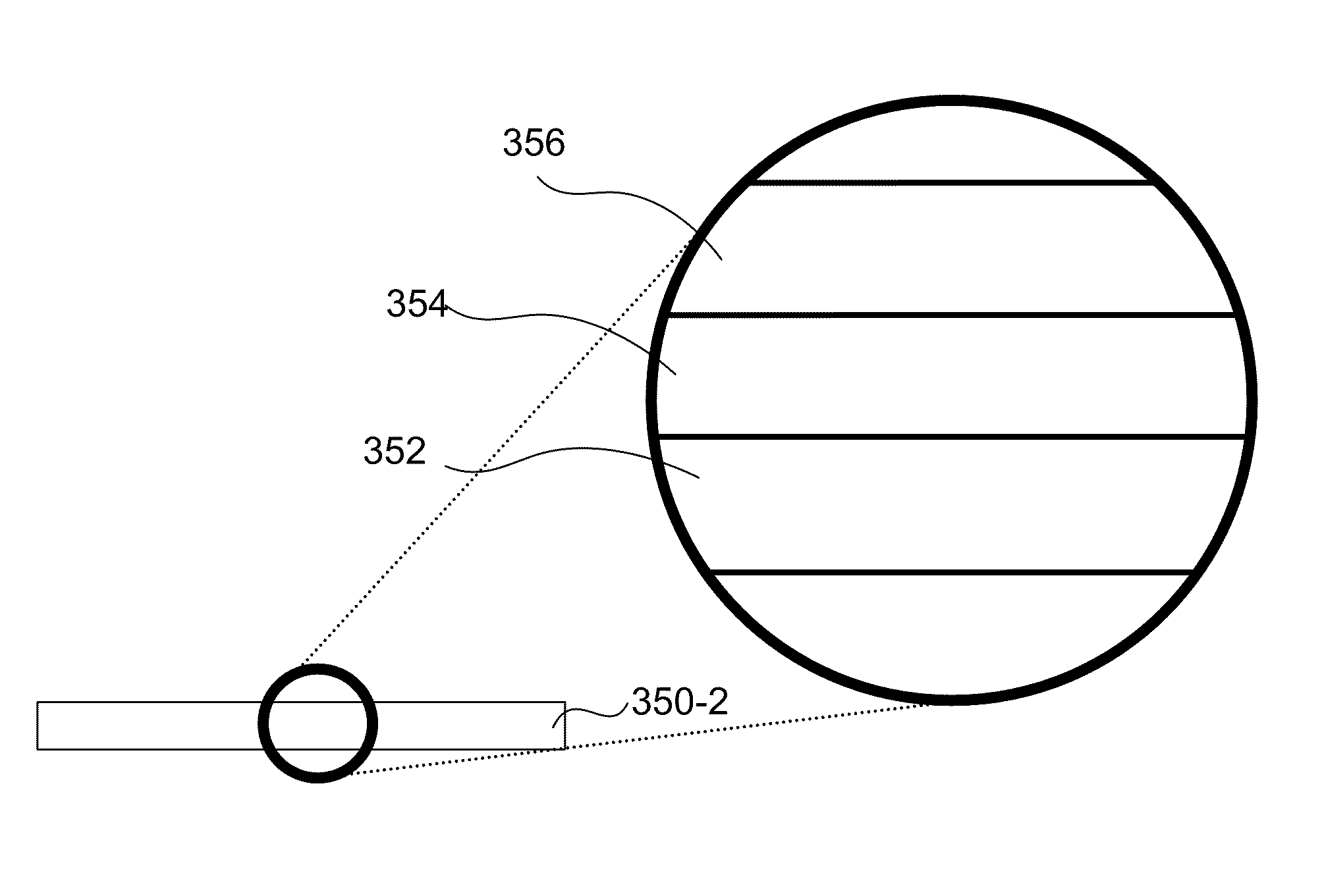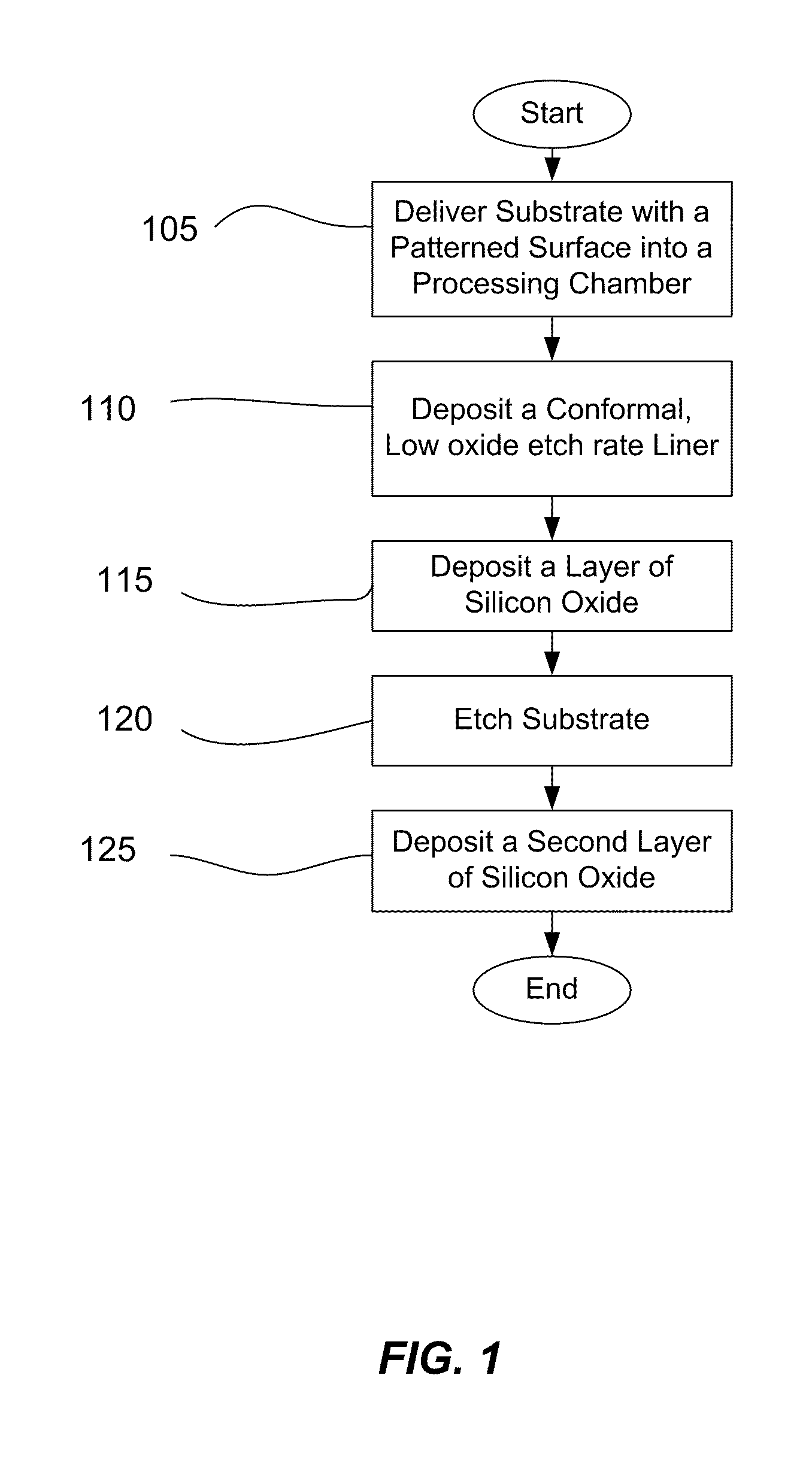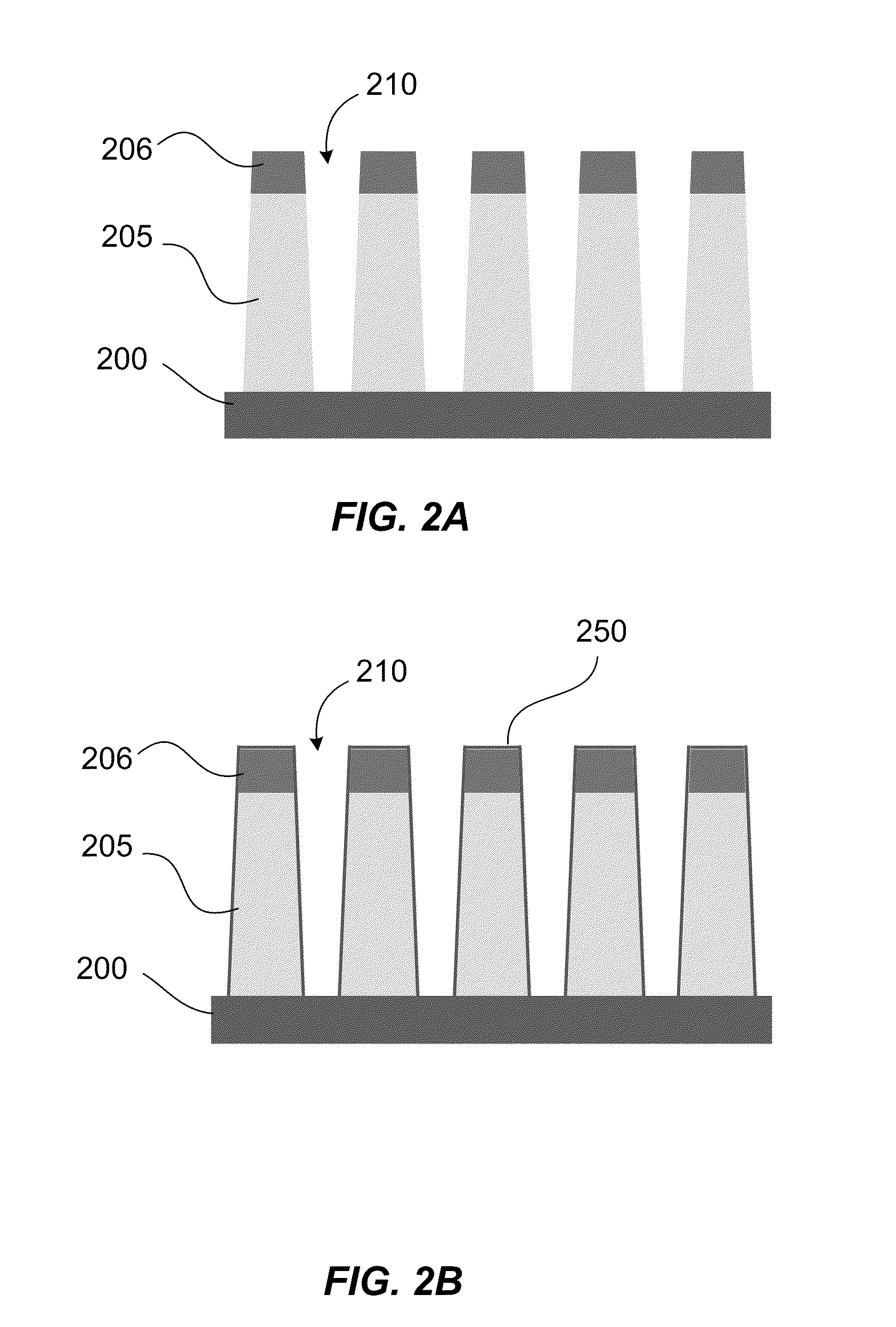Gapfill improvement with low etch rate dielectric liners
a dielectric liner and low etching rate technology, applied in the field of manufacturing technology, can solve the problems of increasing undesirable electrical interactions between adjacent circuit elements, reducing the width of these trenches, and increasing the aspect ratio of the trench
- Summary
- Abstract
- Description
- Claims
- Application Information
AI Technical Summary
Benefits of technology
Problems solved by technology
Method used
Image
Examples
Embodiment Construction
[0017]A method of filling a trench is described and includes depositing a dielectric liner with a high ratio of silicon oxide to dielectric liner etch rate in fluorine-containing etch chemistries. Silicon oxide is deposited within the trench and etched to reopen or widen a gap near the top of the trench. The dielectric liner protects the underlying substrate during the etch process so the gap can be made wider. Silicon oxide is deposited within the trench again to fill the trench.
[0018]Embodiments of the invention are directed to methods of depositing a film to fill a trench in a surface of a substrate. For trenches of a given width, embodiments use a multistep deposition and etching process in which the etching process occurs between deposition processes to widen or reopen a gap within the film. A dielectric liner layer having a low HF etch rate relative to silicon oxide is deposited conformally on a trench in the surface of the substrate and followed by a silicon oxide dep / etch / de...
PUM
 Login to View More
Login to View More Abstract
Description
Claims
Application Information
 Login to View More
Login to View More - R&D
- Intellectual Property
- Life Sciences
- Materials
- Tech Scout
- Unparalleled Data Quality
- Higher Quality Content
- 60% Fewer Hallucinations
Browse by: Latest US Patents, China's latest patents, Technical Efficacy Thesaurus, Application Domain, Technology Topic, Popular Technical Reports.
© 2025 PatSnap. All rights reserved.Legal|Privacy policy|Modern Slavery Act Transparency Statement|Sitemap|About US| Contact US: help@patsnap.com



